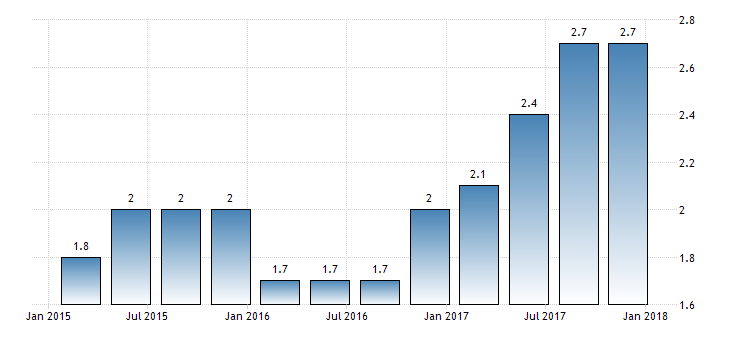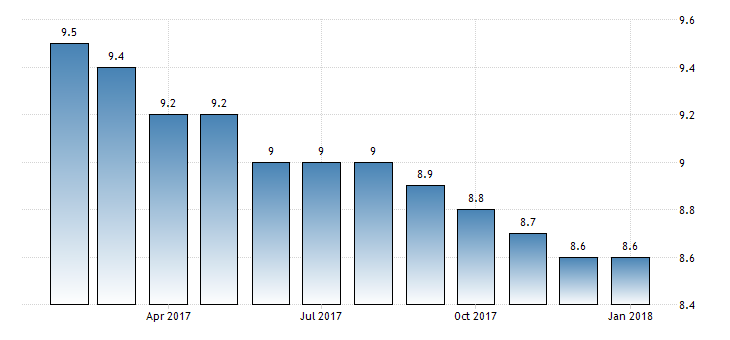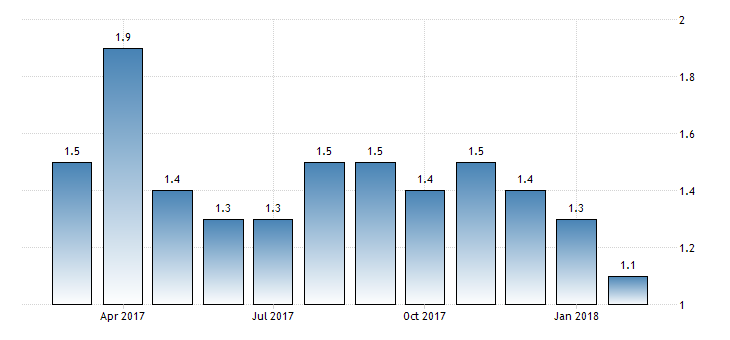
Eurozone and the state of its economy based on key economic indicators. Alexander Sivtsov
The Eurozone – a currency agreement operating within the European Union, which implies the operation of a single currency (euro) within the framework of this association. To date, the Eurozone includes 19 countries.
The European Monetary Union began functioning on January 1, 1999, on that day the single currency (euro) was introduced into non-cash circulation. The countries that are part of the Eurozone transfer all monetary policy powers, the decision on the level of the key interest rate, as well as the decision on the amount of issuance of notes to the European Central Bank (ECB).
Let’s figure out the state of the economy, the only one of its kind in the world, on the basis of key economic indicators, namely GDP, unemployment and inflation.
Eurozone: GDP
Gross Domestic Product (GDP) – is the main macroeconomic indicator that reflects the total market value of all goods and services produced in the country. It is the GDP growth rates that indicate the strength of the country’s economy and its development. In early 2018, the euro area’s GDP growth in annual terms remains at the level of 2.7%, which is the highest value for the last three years. This GDP growth was achieved due to the competent monetary policy of the ECB, as well as in connection with the restoration of energy prices.
Fig.1 Dynamics of changes in GDP growth in annual terms from 2015 to 2018
Eurozone: Unemployment rate
The unemployment rate – is the percentage of the total number of able-bodied people who are currently looking for work. The unemployment rate directly affects the income of the population, which in turn affects the costs and rates of inflation, since in the event of a decrease in the purchasing power of the population, the price increase will only reduce consumption in the country. Over the past 12 months, the unemployment rate in the euro area has fallen from 9.5% to 8.6%, which is a fairly good indicator given the difference in economic development between members of the monetary union.
Fig.2 Dynamics of changes in the unemployment rate from February 2017 to January 2018
Eurozone: Inflation rate
It is inflation that is the engine of the country’s economy, but this engine should work in the right range, while ensuring a stable economic growth in the country. The world standard of the level of inflation for the stable development of economic processes is a range of 2-3%. Over the past year, the maximum level of inflation in the euro area reached a level of 1.9%, thereby not reaching the bottom of the target range of 2%. According to the latest data, the level of inflation in the euro area is 1.1%, which is the lowest value for the last year.
Fig.3 Dynamics of changes in the level of inflation from March 2017 to February 2018
Conclusion
The above data only confirm the recent comments of ECB President Mario Draghi that the Eurozone economy still needs significant monetary incentives to maintain GDP growth rates, as well as to accelerate the growth of inflation. The maximum action that can be expected from the ECB is a reduction in the volume of the QE program, which since January is 30 billion euros a month, but this possibility is not yet discussed by the ECB leadership.
Alexander Sivtsov


